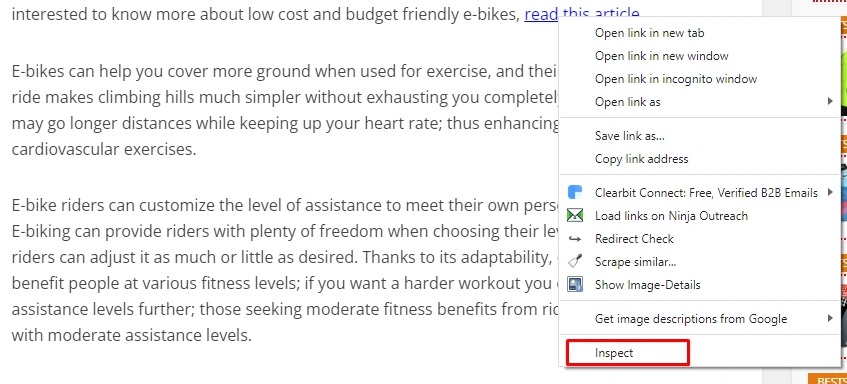Blogs
Practical Insights & Latest Happenings
Don’t miss out on the latest trends and info on SEO, search engines, social media, and more.
September 5, 2023
mothasim

If you are a new website owner or learning about SEO, you will come across terms like “dofollow backlinks” and “nofollow backlinks.” But what are they and what should you know about them?
We are here to explain everything there is to know about the question – “what is a dofollow backlink?”

In simple words, a dofollow link is like a direct recommendation from one site to another. It’s a hyperlink that tells search engines like Google, “Hey, this website is trustworthy and important!” When the crawlers come across a dofollow backlink, they follow the link, take note of it, and consider it as a vote of confidence for the linked website.
Dofollow links are important for SEO since they help boost your visibility and search engine rankings. A dofollow link can be in the form of a text link, an image link, or even a video link. In essence, all links are dofollow unless they have the “nofollow” attribute.

As you can guess, a nofollow link is the opposite of a dofollow link. But what exactly is it?
A nofollow backlink tells Google that the website it is on does not trust the website that it is linking to. In other words, the “nofollow” attribute is a HTML code that tells Google not to directly follow the link. You can say that a nofollow link is more like a “mention” rather than a “recommendation.”
So, what are dofollow and nofollow backlinks? Their main difference is that a dofollow backlink can positively influence a website’s SEO by signaling trust and authority, while a nofollow backlink doesn’t have the same impact.
Both types can help generate traffic and clicks but dofollow is much better for boosting your rankings.
When you genuinely want to endorse or recommend another website or resource, you should use a dofollow link. For example, if a blog post references a helpful article or website, including a dofollow link can pass on authority and signal to Google that the linked content is valuable.
If you want to link to a well-known and trusted source, such as a reputable news site or an authoritative industry website, using a dofollow link can reinforce the credibility of the linked content. This can actually enhance your own SEO by associating it with trustworthy sources.
When a guest author contributes content to another website or engages in a collaborative effort, using dofollow links within the content is recommended. This allows the guest author to benefit from the SEO value of the backlink while providing relevant and valuable information to the readers.
In academic or research-based content, you have to use dofollow links to cite and reference external sources. It not only gives credit to the original authors but also provides readers with a way to access additional information for a comprehensive understanding of the topic.
When a website includes paid advertisements, they often use nofollow links. This helps indicate to search engines that the link is part of an advertisement and should not be considered for ranking purposes. It allows websites to generate revenue from ads while maintaining transparency.
Websites that allow users to contribute content, such as comments or forum posts, often use nofollow links for the links included in these user-generated submissions. This helps prevent spam and ensures that the website isn’t endorsing any potentially unreliable or harmful links.
When a website publishes sponsored content, such as articles or reviews paid for by advertisers, they might include nofollow links within the content. This distinguishes the link as part of a sponsored partnership and informs search engines that it shouldn’t affect the ranking of the linked website.
In certain cases, a website may encounter links that they do not fully trust or find reliable. To protect their own SEO and reputation, they can choose to add a nofollow attribute to those links. This way, search engines won’t pass on any authority from them to your site.
It’s a simple process. Put your cursor on the link that you want to check out and right click on it. Then choose the “Inspect” menu as shown below.

If it’s a dofollow link, you will see this: rel=”dofollow noopener,” which would mean it is a dofollow link.

Similarly, if it is a nofollow link, you will see: rel=”nofollow noopener”

What is a dofollow backlink? – now that you have a clear idea about this matter, we hope you will be able to make the best of your link building campaign and level up your SEO to a great extent.
Ans. Nofollow links may not directly help improve your rankings but they can still be useful in a number of ways. For instance, when another website links to yours, even with a nofollow tag, it shows that they trust you and your content. This can lead to opportunities for collaboration, guest blogging, and other forms of mutually beneficial marketing.
Ans. No, by default, external links are not necessarily dofollow. If a website owner doesn’t specify otherwise, external links are usually considered dofollow. However, webmasters have the ability to add a nofollow attribute to any link if they choose to do so.
Ans. While your SEO strategy needs dofollow links, you should make sure the linking website’s quality is up to par. Low-quality or spammy backlinks from unrelated or unreliable sources can potentially have a negative impact on SEO. Try to get high-quality and natural dofollow links from credible sources at all times.
Ans. The number of dofollow backlinks you need to improve your website’s ranking will vary depending on a number of factors, including the quality of your content, the authority of the websites that link to you, and the competition in your niche. However, in general, more dofollow backlinks from authority websites is always better.